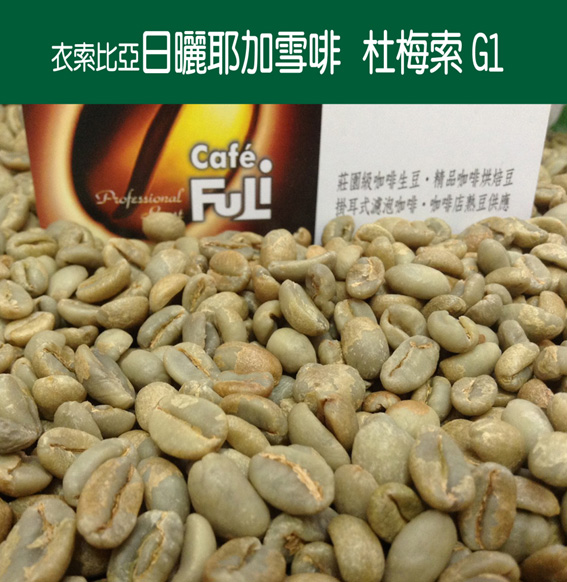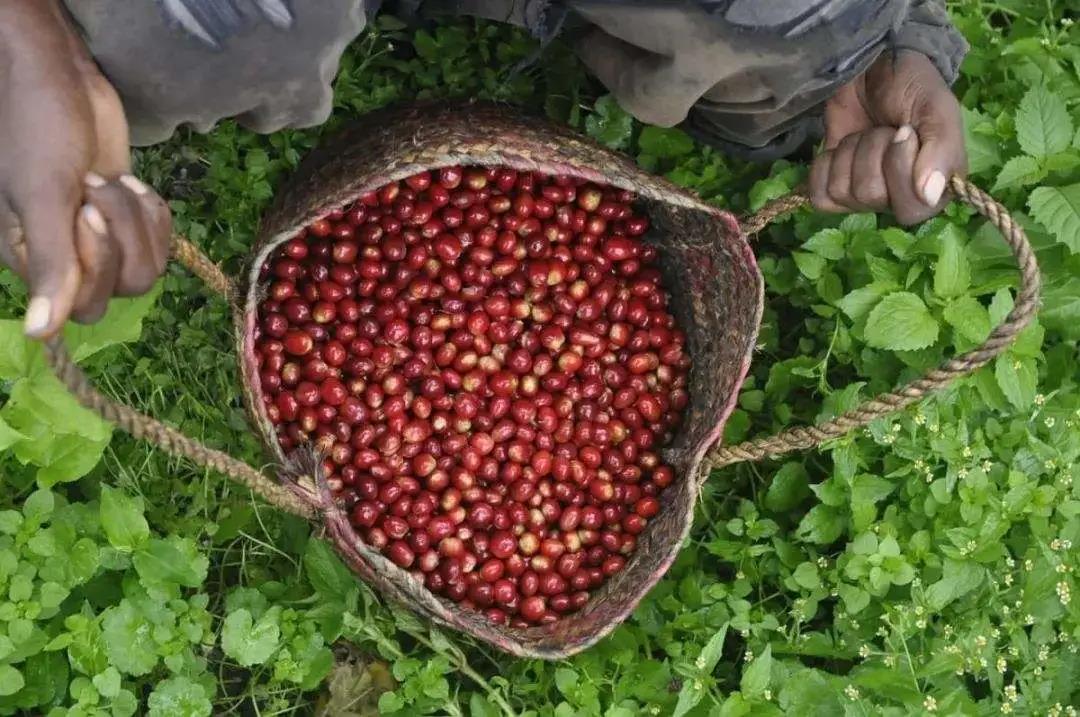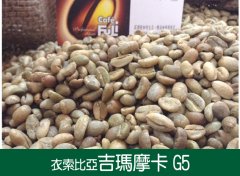Description of flavor and flavor of coffee in small producing area of G _ 1 Dumeso in Ethiopia

For professional baristas, please follow the coffee workshop (Wechat official account cafe_style)
Producing area: Yega snow caffeine Dumerso
Altitude: 2000-2200 m
Treatment: insolation
Grade: G1
Annual rainfall: 1400-1800mm
Soil: reddish brown
Harvest time: October of each year to February of the following year
Variety: Typica & Heirloom native species
Flavor: dried fruit, citrus orange notes, sweetness, good cleanliness balance, black tea tail, soft and smooth, with berry flavor at the end
Dumerso is located in a small production area in the southeast of Yega Coffee, where coffee beans are harvested from local small coffee farmers, bringing together a large number of small coffee farmers to form the Dumerso Coop. This cooperative was founded in 1975 and joined the Yirgacheffe Coffee Farmers Cooperative Union (YCFCU) Cooperative Association as one of its 305 members.
The Dumeso Cooperative has 2254 members of coffee farmers who cultivate an average of less than 4 hectares of coffee at an altitude of about 2000-2200 meters. Coffee varieties are mainly a mixture of Typica and Heirloom (local native species). Every one or two years, members of the co-operative will hold an election to elect the executive committee, make decisions on the procurement of new equipment, exchange business information with members and the mode of payment for transactions, and so on. In addition, YCFCU will also assign professional managers to cooperatives to provide guidance and advice on harvest, production and other procedures, so as to increase production and improve quality. The establishment of the co-operative frees its farmers from the low-price exploitation of the purchasers. When the economy is in trouble, the co-operative provides loan assistance, which is very positive for both the farmers and the coffee production.
The Dumeso Cooperative has its own washing treatment plant, which has a high level of coffee flavor performance in the field of washing treatment. The main local production mode is that small coffee farmers will harvest red fruits and send them directly to the cooperative water washing plant for unified treatment. In 1970, Ethiopia began to introduce water washing technology. After screening and grading red cherry color coffee fruits, the water washing plant directly removed the peel to wash and ferment. After washing, the raw beans with shells were placed on the scaffolding for natural exposure and the humidity was less than 12%. It will be sent directly to the Ethiopian Commodity Exchange (ECX) warehouse in Awassa. Beans that are cup-tested, graded and quantity usually washed are stored in the form of shell beans and will not be shelled until they are exported.
Important Notice :
前街咖啡 FrontStreet Coffee has moved to new addredd:
FrontStreet Coffee Address: 315,Donghua East Road,GuangZhou
Tel:020 38364473
- Prev

Description of flavor and aroma characteristics of Xidamo Gujiahanbela coffee in Ethiopia
For the exchange of professional baristas, please follow the coffee workshop (Wechat official account cafe_style) EthiopiaWashedGujiHambelaG1 washing Gujimbela G1 producing area of Guji (GujiZone) Humbera (HambelaWor)
- Next

2017 description of flavor and aroma of Ethiopian Gima mocha G5 coffee
Professional barista exchanges please follow the coffee workshop (Wechat official account cafe_style) Djimma is an important coffee producing area in Ethiopia! Gima and Sidamo are both important sun mocha producing areas in the country; the beans in Jima are mainly from Kaffa and Illubabor, and Kaffa is the origin of the name coffee. Gima is currently an Ethiopian coffee.
Related
- Detailed explanation of Jadeite planting Land in Panamanian Jadeite Manor introduction to the grading system of Jadeite competitive bidding, Red bid, Green bid and Rose Summer
- Story of Coffee planting in Brenka region of Costa Rica Stonehenge Manor anaerobic heavy honey treatment of flavor mouth
- What's on the barrel of Blue Mountain Coffee beans?
- Can American coffee also pull flowers? How to use hot American style to pull out a good-looking pattern?
- Can you make a cold extract with coffee beans? What is the right proportion for cold-extracted coffee formula?
- Indonesian PWN Gold Mandrine Coffee Origin Features Flavor How to Chong? Mandolin coffee is American.
- A brief introduction to the flavor characteristics of Brazilian yellow bourbon coffee beans
- What is the effect of different water quality on the flavor of cold-extracted coffee? What kind of water is best for brewing coffee?
- Why do you think of Rose Summer whenever you mention Panamanian coffee?
- Introduction to the characteristics of authentic blue mountain coffee bean producing areas? What is the CIB Coffee Authority in Jamaica?

